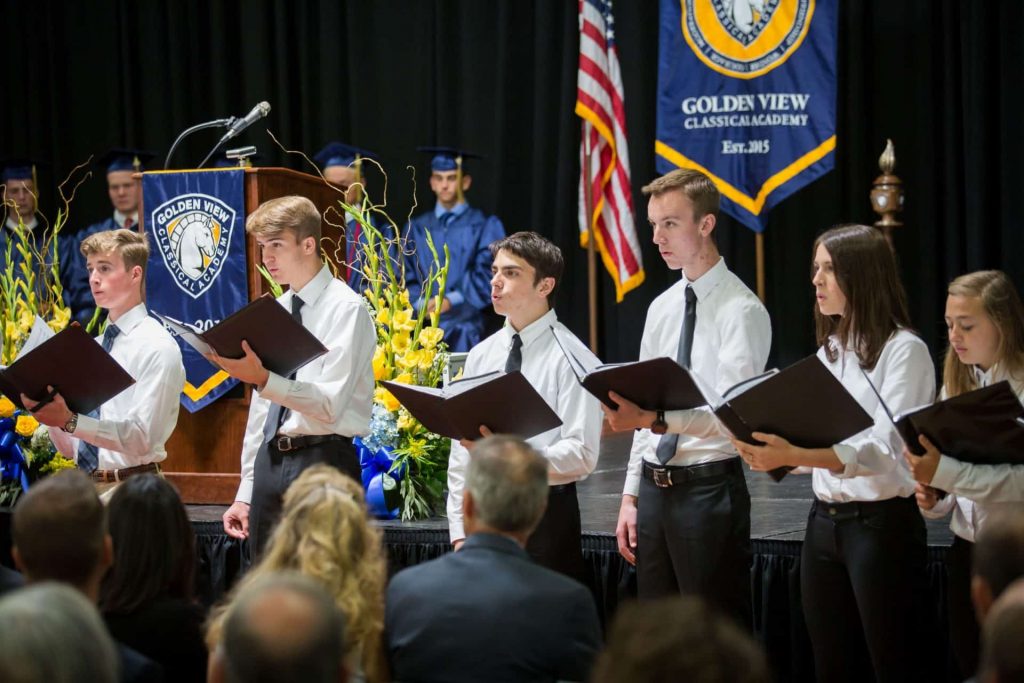
Sarah Kiesewetter teaches fifth grade at Golden View Classical Academy in Golden, Colorado. Golden View Classical Academy emphasizes seven core virtues: courage, moderation, justice, responsibility, prudence, friendship, and wonder.
Who are your teaching inspirations?
I had a literature teacher in high school, Mr. Doyle, who knew more about the classics than anyone I’d ever met, and he always challenged me to go below the surface of the text to find the lessons in each novel. I learned later that he had given up his profession as a successful lawyer to become a teacher. I always thought that he had done it because he wanted to help others to become better people, and was willing to sacrifice money in pursuit of the truth.
Which thinker do you enjoy teaching the most? Why?
One of the philosophers whose ideas I have considered a great deal as I teach science is Sir Francis Bacon. In his book Novum Organum, he writes that the method of drawing conclusions from propositions through logical argument as practiced by Aristotle is generally sound, but in science, those propositions were often wrong due to a lack of substantial evidence about the way things work in nature. Bacon argued that natural philosophers tended to become more focused on the art of arguing rather than the matter about which they argued, and proposed that scientists must follow a procedure that necessitates constant, detailed experimentation. This was the birth of the scientific method that we use today, and I have been thinking a great deal about how I can incorporate this into my daily science lessons.
What new ideas or skills do students uniquely develop in 5th grade?
One of the capstones of the fifth grade is the Five Paragraph Essay. We spend months identifying and practicing text structure, different types of arguments, and the mechanics of good composition. Students learn to develop a topic and form an organized plan, and they learn to compose paragraphs that include both an introductory and a conclusion paragraph. Some of the serious ideas we consider in the fifth grade are about human slavery; we discuss how the institution deforms and mangles the souls of not only the enslaved, but also of the masters.
How have your teaching methods evolved in the past few years?
I remember a time when I thought that I could keep a class of 30 students quiet while I delivered an entire lesson; I laugh now at my feeble attempts! Fifth graders love nothing more than to talk, and I have learned that I can harness this desire to help learning in the classroom. I’ve learned to ask the students to discuss what we read with each other, and I’ve looked for new ways to have students work together to come to a common understanding of a new concept. I’ve been pleasantly surprised with the results, and I’ve come to love and appreciate the Socratic Method as a powerful tool for learning in the classroom.
What does classical education look like for you practically?
In our world of high-stakes tests and other public expectations for college and career readiness, the job of a classical teacher can sometimes feel daunting. I want to teach my students things that are true, and also help them to love learning for its own sake. Sometimes that means delighting in a book like Wind in the Willows, and sometimes it means buckling down to figure out how we can define a word based on its use in context. We balance good literature, history, and science readings with the skills necessary to understand them, and what students find is that they are able to read something on their own and think about it, as well as form judgments about it. We learn about stories and ideas from the past to instruct the way we approach our own futures, and we can only make good choices about our own actions if we have a large bank from which to draw.
